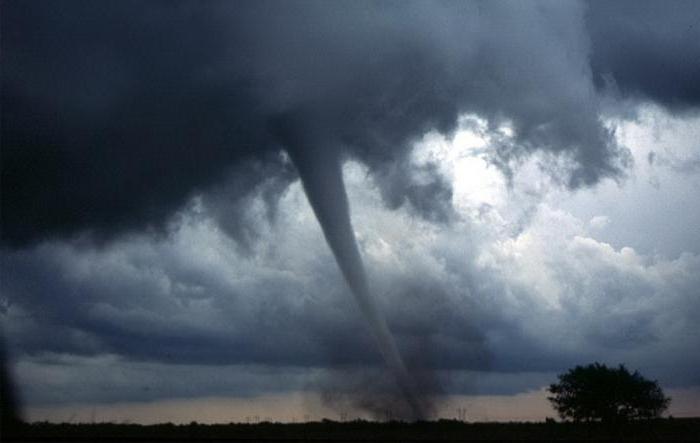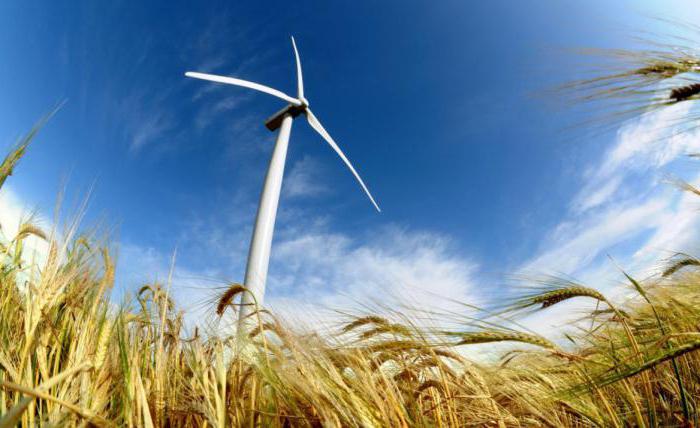Wind speed and direction
Wind is the movement of air that occurs parallel to the earth's surface and has a horizontal character. The main property of such a flow is its velocity vector. In practice, this value represents a numerical value. Additional characteristics are the direction and strength of the wind. According to these criteria, there are several classifications at once.
General concepts
The wind on planet Earth is a stream of air, mostly moving horizontally. A similar phenomenon is observed on other cosmic bodies. However, in this case we are already talking about the flow of atmospheric gases. This is how solar and planetary winds are distinguished.
Air currents on Earth are classified by speed, scale, strength, impact on objects and areas of distribution. However, the main characteristic is still the direction of the wind. Also, do not forget about its duration. It is by these criteria that winds are classified in the first place. For example, short-term and long-term, strong and weak, etc. Squalls are called powerful short-term streams. Their duration rarely exceeds 1 minute. Of the longest, one can distinguish a breeze, a storm, a storm, a typhoon and a hurricane. All of them are additionally characterized by the forces of occurrence and impact. In turn, the duration of the wind can be from a couple of seconds to several months. This phenomenon depends on the difference in heating of air particles, relief features, and atmospheric circulation.
In rare cases, vertical winds occur. Their movement is directed from bottom to top or vice versa. Such streams are called downstream or upstream.
Methods for measuring characteristics
To find out what direction the wind is, you need to use one of the special instruments. Each of these instruments shows the azimuth of the point of origin of the flow. The resulting values will be in the range of 180 degrees.
Wind speed and direction can be measured with an anemometer. This device has found application in the energy industry. The flow hits a special membrane. The push is fixed by the sensor, the data is processed and displayed on the screen.
To measure the purely wind direction, you can use a conventional weather vane. This tool works even with the slightest breath. As a result, the arrow will indicate the direction of the wind. The error depends on the quality of the weather vane. On average, it varies between 2-3%.  If you do not have the necessary tools at hand, you can use your index finger. Just wet it and stick it up. The finger will quickly feel cool. Thus, it is possible to determine from which side the flow is moving. On the other hand, this technology does not work in hot, humid climates.
If you do not have the necessary tools at hand, you can use your index finger. Just wet it and stick it up. The finger will quickly feel cool. Thus, it is possible to determine from which side the flow is moving. On the other hand, this technology does not work in hot, humid climates.
Direction of the wind
The movement of air flow is determined horizontally on the side from which it comes. If it is blowing north, then the direction of the wind is south. Such movement directly depends on the force of rotation of the planet and the distribution of atmospheric pressure. The closer the flows are to the Earth's surface, the more variable they are.
As you know, water and land heat up at different rates. During the summer, the temperature of the earth's surface rises rapidly. As a result of this phenomenon, the air heats up, expands and becomes much lighter. In turn, it is always colder above the surface of the water. Consequently, the air currents become heavier and more compressed. Therefore, it is from the side of the water that a cool wind always blows. At night, streams often come from the shore.  Mountainous terrain can be another place where winds originate. In this case, the dry and warm flow is called "fen", and the strong and cold - "boron".
Mountainous terrain can be another place where winds originate. In this case, the dry and warm flow is called "fen", and the strong and cold - "boron".
Wind speed classification
This characteristic is measured in points or meters per second. Depends on the so-called baric gradient. The smaller its value, the lower the flow rate. For reference: 1 point is approximately equal to 2 m/s.
It is true that the strength of the wind directly depends on its speed. In addition, the greater the pressure difference between the affected areas of the surface, the more powerful the flow will be. To date, there is a Beaufort scale, according to which the force of the wind is determined:
The most powerful winds
A few years ago, the Beaufort scale was expanded by the US National Weather Service. Additions are only in the "hurricane" category:
12.1 points - strong windfall. Its speed is from 35 to 42 m/s. The wind is constantly changing direction. The destructive impact extends to telegraph poles and wooden buildings.  - 12.2 points. Such a hurricane has a speed of up to 49 m/s. Roofs, doors and windows of stone buildings are damaged.
- 12.2 points. Such a hurricane has a speed of up to 49 m/s. Roofs, doors and windows of stone buildings are damaged.
12.3 points. Wind with a speed of up to 58 m/s destroys light houses, overtakes waves with a height of up to 3.5 m. Flooding is possible.
12.4 points. Such a windblow is characterized by a speed of 59-70 m/s. The stream uproots medium trees, causing severe damage to durable buildings.
12.5 points. Wind with a speed of over 71 m/s destroys powerful buildings, including stone ones. Deep craters remain in the ground. Heavy objects are lifted into the sky. Flooding is inevitable.
local winds
Most often, such flows are formed on the plains of the continent or over the sea. One of the most common types is the breeze. In this case, the prevailing wind direction is characterized by local circulation of warm air. It is formed due to a low pressure drop at a positive temperature.  The speed of local winds rarely exceeds 4 m/s. More intense flows come from mountain ranges. The formation takes place at heights, and the breath - mainly in the valleys.
The speed of local winds rarely exceeds 4 m/s. More intense flows come from mountain ranges. The formation takes place at heights, and the breath - mainly in the valleys.
global winds
We are talking about monsoons and trade winds. The first type of global winds is seasonal. It changes its direction only 2 times a year. Tropical monsoons move from middle latitudes. They are mostly warm. Extratropical winds blow from the polar and temperate latitudes, significantly reducing the air temperature.
Trade winds depend on atmospheric pressure. Most often they blow from the west. In rare cases, east and south trade winds can be observed. The main location of distribution is the equator zone.


